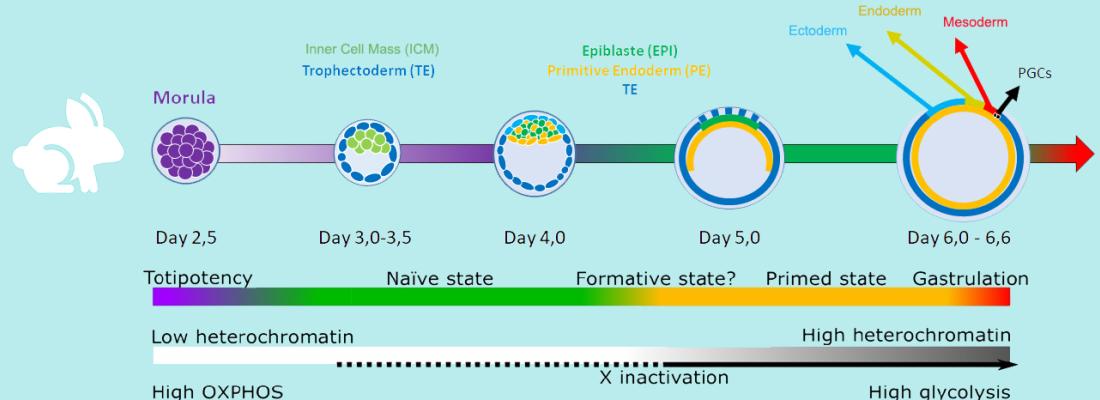Biodiversity Reading time 6 min
Major transcriptomic, epigenetic and metabolic changes underlie the pluripotency continuum in rabbit preimplantation embryos
Published on 09 February 2023

Despite the growing interest in the rabbit model for developmental and stem cell biology, the characterization of embryos at the molecular level is still poorly documented.
We conducted a transcriptome analysis of rabbit preimplantation embryos from E2.7 (morula stage) to E6.6 (early primitive streak stage) using bulk and single-cell RNA-sequencing. In parallel, we studied oxidative phosphorylation and glycolysis, and analysed active and repressive epigenetic modifications during blastocyst formation and expansion.
We generated a transcriptomic, epigenetic and metabolic map of the pluripotency continuum in rabbit preimplantation embryos, and identified novel markers of naive pluripotency that might be instrumental for deriving naive pluripotent stem cell lines.
Although the rabbit is evolutionarily closer to mice than to primates, we found that the transcriptome of rabbit epiblast cells shares common features with those of humans and non-human primates.
Bouchereau, W.; Jouneau, L.; Archilla, C.; Aksoy, I.; Moulin, A.; Daniel, N.; Peynot, N.; Calderari, S.; Joly, T.; Godet, M.; Jaszczyszyn, Y.; Pratlong, M.; Severac, D.; Savatier, P.; Duranthon, V.; Afanassieff, M.; Beaujean, N., 2022. Major transcriptomic, epigenetic and metabolic changes underlie the pluripotency continuum in rabbit preimplantation embryos. Development, 149 (17): 17 http://dx.doi.org/10.1242/dev.200538
